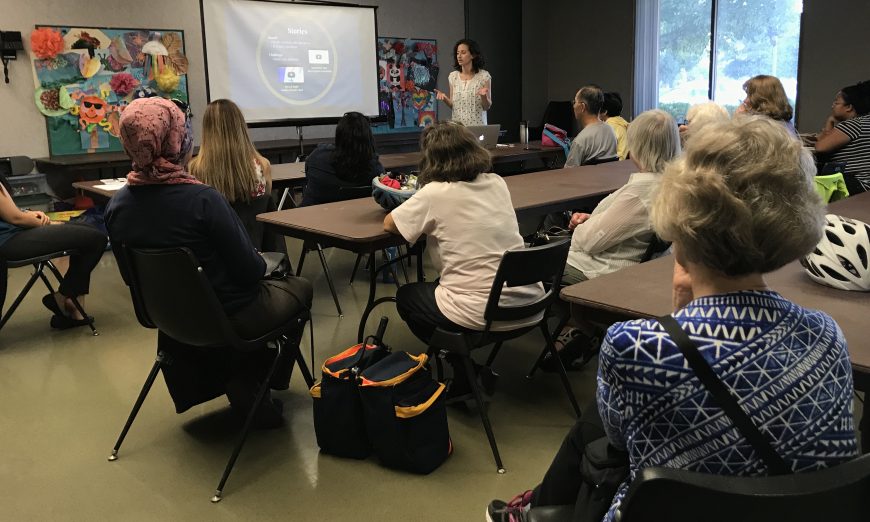The City of Santa Clara launched its Sustainable Speaker series with its first talk, Adopting Zero Waste Behavior by Meghan Kelly on Aug. 15 at the Community Recreation Center.
The series will focus on increasing sustainable behaviors in the community, such as reducing energy use, water conservation and inspiring environmental stewardship.
Kelly, founder of Green Motivate, works with companies, governmental agencies and outreach programs locally and nationally to encourage environmental actions. Kelly’s talk reviewed ways to encourage people and communities to adopt more environmentally conscious behaviors by creating social norms and social diffusion.
“Increasing awareness and changing attitudes isn’t enough, it’s about changing actions,” Kelly said, emphasizing that understanding or being concerned about the environment wasn’t the goal. “Fear and guilt don’t help. Negative emotions don’t cause behavior change, positive emotions do.”
Some of Kelly’s work involves conducting research, making ad campaigns and using personal positive stories to involve people in making change.
“In this current political climate, I think it’s important that individuals feel empowered to take action on their own, and to feel like what they’re doing will make a difference,” Kelly said.
However, some of the visitors disagreed that personal responsibility would bring about the change needed for environmental restoration.
“Individual responsibility is not enough. It wasn’t until plastic bags were banned that people started using reusable bags. Now, 90 percent of people bring their own bags,” said Sudhanshu Jain, Santa Clara resident and Chair of the City’s Planning Commission.
Jain, who trained with Al Gore as an educator on climate change, believes legislative changes are more effective in changing behavior, particularly considering recent changes to landfill and recycling plants.
“The idea is to reduce waste,” said Jain. “Most of the recyclable stuff we use ends up shipped to China, where it’s sorted in toxic facilities, and raw materials are shipped back. China is no longer taking junk, so we’re stuck and landfill it instead. If we want to solve the problem, we have to use less.”
Diane Harrison, resident of Santa Clara, shared her experiences of using less. She washes and dries bread bags to use for produce, sews up old shirts to use as bags, and composts food scraps in the backyard.
Kelly also agrees that there will be a minority of innovators and early adopters who initiate the change themselves, but most people fall into the early majority and late majority categories. These people will need either guidance or legal intervention to make changes in their waste production.
According to the CalRecycle Report, California produced 35 million tons of landfill in 2016, the majority of which was food waste. The number averages to about 6 lbs per person. This increase for the fourth year in a row was attributed to an upsurge in individual waste production, not just population, indicating the need to create less waste.
Legislation may be the only way to encourage long-term sustainable behaviors, but the City of Santa Clara seems to have taken a step in the right direction by encouraging residents to adopt zero waste habits and take personal responsibility.
“We have always had an education-first approach. We don’t like forcing people, we like educating people and hoping they change,” said Lina Prada-Baez, staff aide for Santa Clara’s environmental programs.
The next event in the series is scheduled for Sep. 23 at the Repair Café, and will include DIY options to make your own kombucha, fix broken electronics and perform energy audits.






